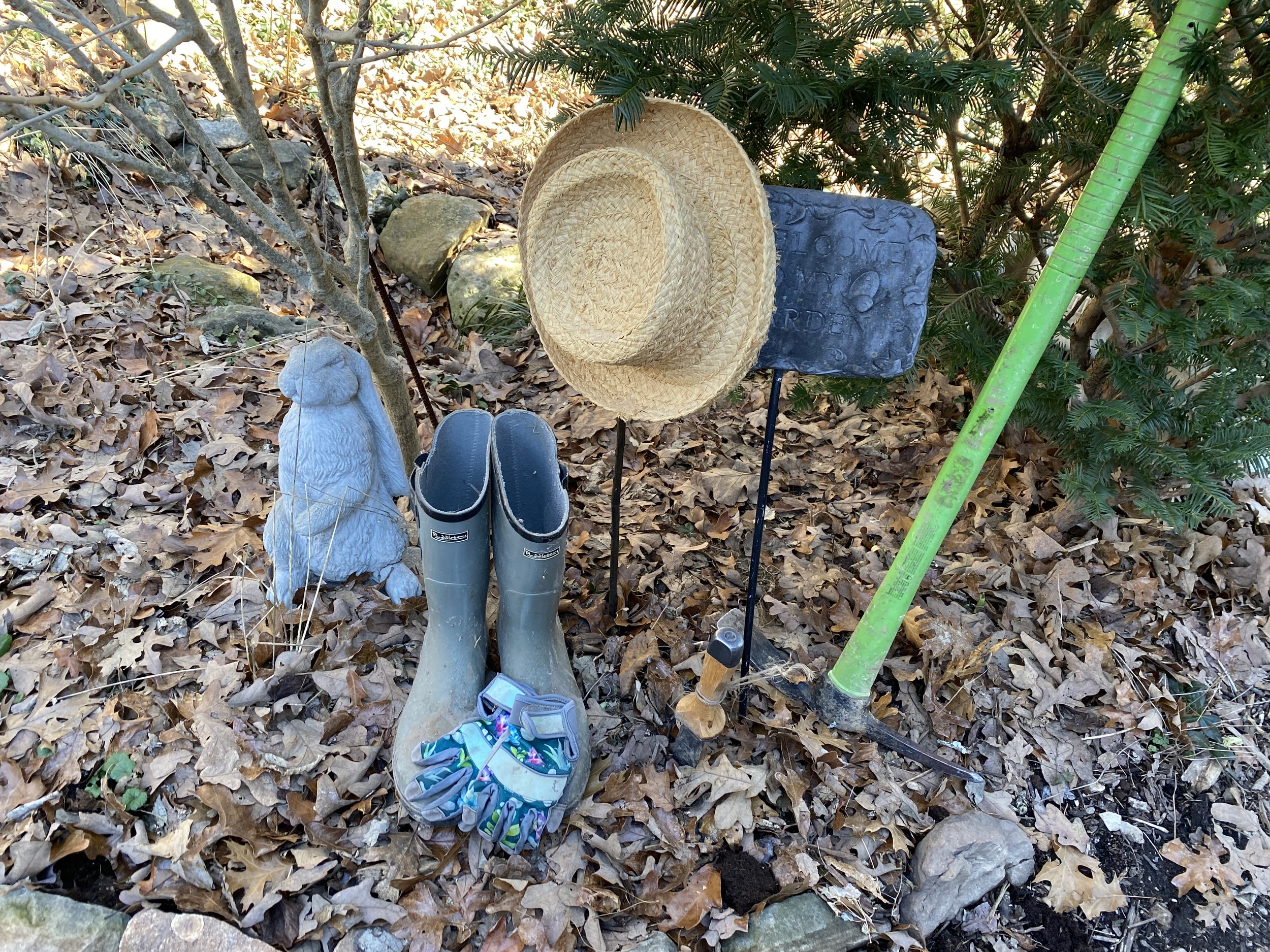Top 13 Gardening Tools
/some of my favorite gardening tools are not found in garden centers. (charlotte ekker wiggins photo)
Top 13 Gardening Tools
Several friends are starting to garden this year and have asked for a list of the top gardening tools they need. Here is my list with some substitutes:
Hand Trowel: A hand trowel is a small, handheld tool with a pointed, scoop-shaped metal blade. It's ideal for digging small holes, transplanting seedlings, and breaking up soil.
Garden Knife or Hori Hori: Sometimes called a soil knife, this multipurpose tool originally from Japan is a combination of a knife and a trowel. It's excellent for digging, cutting roots, weeding, and many other tasks. The only downside is the blade can be sharp so be careful not to get cut.
Pruning Shears: Also known as hand pruners, these are essential for cutting small branches, trimming plants, and deadheading flowers. Look for a sharp, high-quality pair for clean cuts.
Pruning Saw: For larger branches that pruning shears can't handle, a pruning saw is essential. It's great for shaping shrubs and trees, and it ensures clean cuts for the plant's health.
Garden Gloves: Protect your hands from thorns, blisters, and dirt with a sturdy pair of garden gloves. Choose gloves that fit well and provide good dexterity. My favorite pair came from the children’s section. I bought several pairs in the same pattern so if one wears out, I have another one.
Galoshes: If you have a lot of rain, keep a pair of galoshes handy. Tennis shoes and gardening slides will only take you so far.
Sun Hat: Besides using sunscreen, find a hat that comfortably fits on your head. It's easy to forget how long one has been out in the garden exposed to sun.
Rake or Pick Ax: A garden rake is useful for leveling soil, spreading mulch, and gathering leaves. It comes in handy for cleaning up your garden beds and maintaining a tidy appearance. Except for scooping up leaves, I use pick axes to level soil and spread mulch.
Watering Can and Hose: A watering can is great for targeted watering, especially for containers or smaller areas. A hose with an adjustable nozzle is versatile for various larger watering needs.
Wheelbarrow or Garden Cart: Moving soil, compost, mulch, or plants becomes much easier with a wheelbarrow or garden cart. It helps reduce the strain on your back and allows you to transport materials efficiently. I have a garden cart since a wheelbarrow tends to take off on its own own my hillside.
Garden Fork: A garden fork is designed for breaking up and aerating soil. It's especially useful in clay or compacted soil, allowing for better water and nutrient penetration.
Soil Tester: Knowing your soil's pH is crucial for understanding its acidity or alkalinity. This information helps you choose plants that will thrive in your garden. I haven’t found a home soil tester that’s reliable so I take samples to our local Extension office every other year.
Catalogs: If you are new to gardening, get a few catalogs to start identifying what you want to plant and whether you have the right conditions. Many suppliers offer free catalogs you can order online and you could buy the world’s largest seed catalog for sheer fun.
Also take time to learn how to maintain your tools, such as cleaning and sharpening. Good care will extend the life of your tools.
For more gardening, beekeeping, cooking and easy home decor tips, subscribe to Garden Notes.
Charlotte












